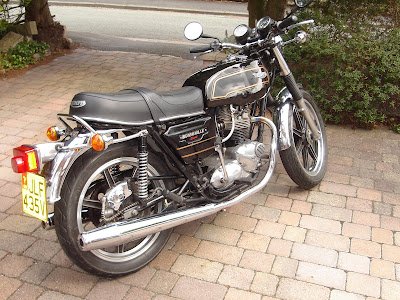You liked a laugh
and to fly
very low
and so do I Peter Price at Barton in 1981 with Citabria G-BGGA, which we had just
Peter Price at Barton in 1981 with Citabria G-BGGA, which we had just
flown to Manchester International and back. Peter Price died on 2nd January 2011 peacefully in hospital, only weeks from his 85th birthday. He joined our Chipmunk group at Barton soon after it started, in 1979, and for most of the 1980s and into the early 1990s he was a regular flying companion of mine until ill health robbed him of his pilot's licence. We had many flights together, mostly in the Chipmunk, and Peter's good humour and adventurous approach to flying always made such flights memorable. He was an excellent 'stick & rudder' pilot, if not one who was always happy to follow procedures! Correct radio technique and following of complex joining instructions at fly-ins etc were not his forte. This is perhaps also reflected in the other major passion he'd followed when he was younger - competitive motorcycling, where he competed in the Isle of Man TT among other achievements.
On one flight to a busy flying rally at Cranfield in Bedfordshire for which the organisers had issued an Air Information Circular (AIC) defining a procedure by which several hundred small aeroplanes would be able to land safely in a short space of time, Peter was navigating and doing the radio and I was flying the aeroplane (for the return journey, we'd swap roles). "Just head for that lake, turn left, and land" said Peter. "And you can do the radio now", he added. I was a bit busy watching other aeroplanes who didn't appear to be using our inbound routing, so I didn't query his handing over this responsibility to me, and pressed the transmit button:
"Sierra Lima is downwind to land, passing the lake"
"Sierra Lima do you have the AIC?"
"Affirm"
"Then I suggest you read it!"
I broke off the approach, handed the aeroplane to Peter, and asked him for the AIC which I then read, and guided him to follow its carefully defined inbound routing!
He had an uncanny knack of reading weather; sometimes he would phone up suggesting a flight the next day, and I'd say "but the weather's going to be awful!". Amazingly, the next day would be a really good flying day. "They didn't forecast this" I'd say. "I forecast it!" would be Peter's reply.
And he had a wealth of aviation lore going back to World War Two. He'd joined the RAF late in that war and trained as a flight engineer on the Halifax and Lancaster heavy bombers and was expecting a posting to India when the atomic bomb brought hostilities to an end.
So he didn't see active sevice, but he had vivid memories of a long gone world of post-WW2 aviation; the shoestring airlines operating poorly-maintained ex-military Avro Yorks and DC3s, Shropshire being so full of training airfields that circuits overlapped and there were many mid air collisions, especially at night, and numerous examples of flying under bridges and down small town high streets, the sort of thing for which by the time I started flying, they'd lock you up and throw away the key. It was always fascinating to hear his tales - it was as if he was from a completely different age, an age before radios and controlled airspace; which in a way, he was. But we still enjoyed zero-height beat-ups of Southport beach, flying around, between and hopping over the big hangars at Hawarden after 'Black Jake', the dour airfield manager, had gone home, and dodging the sheep on the moors north of Bolton! Compared to today, it was still a relatively free and easy environment in flying 30 years ago.
It is to his credit that on one of these flights, aged 70, he was reported for low flying at Southport. The magistrates deemed he had flown closer than the legal minimum of 500 feet from the pier (that' s 500 feet laterally, not 500 feet above, of course - the law is no closer than 500 feet to any person, vessel, or structure), and he was fined. What a star!
Today was his funeral, at Manchester Crematorium. Funeral parties arrived every 40 minutes, a 'conveyor belt of death', to be processed by this functional but depressing municipal establishment. What a contrast to the freedom of the air, to sunlight, and the joyous adventure that was endemic in Peter's soul. Still, he wasn't there. Just his physical remains in a wooden casket. The man has gone, but he lives on in the many happy memories he leaves behind.
 A photo I took near Rochdale in 1986 looking back from the front seat of
A photo I took near Rochdale in 1986 looking back from the front seat of
our dH Chipmunk to Peter in the back seat







